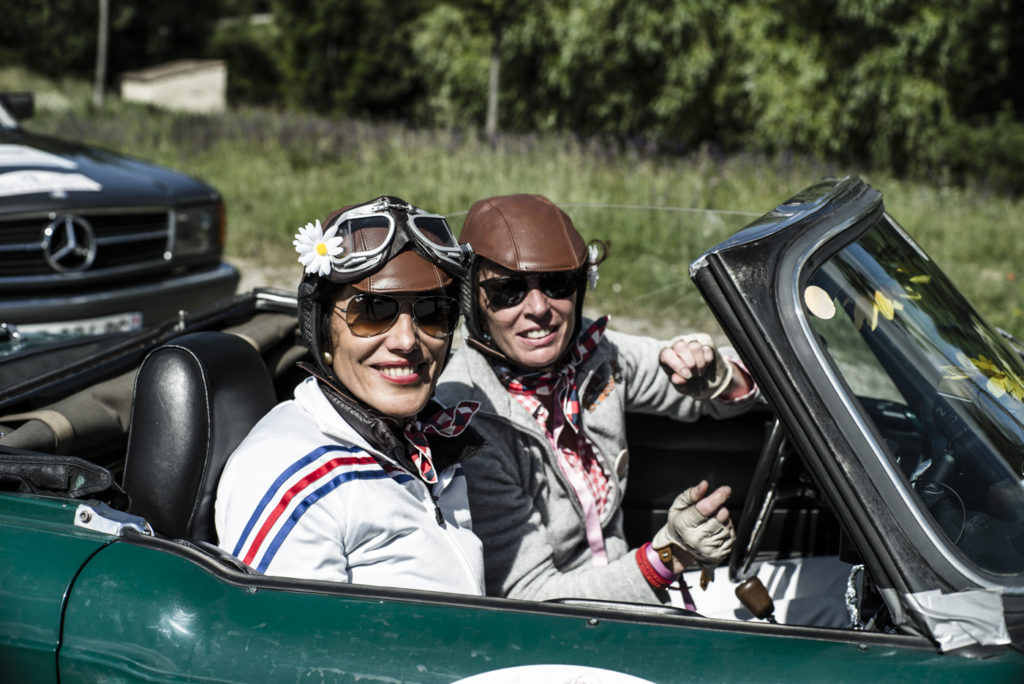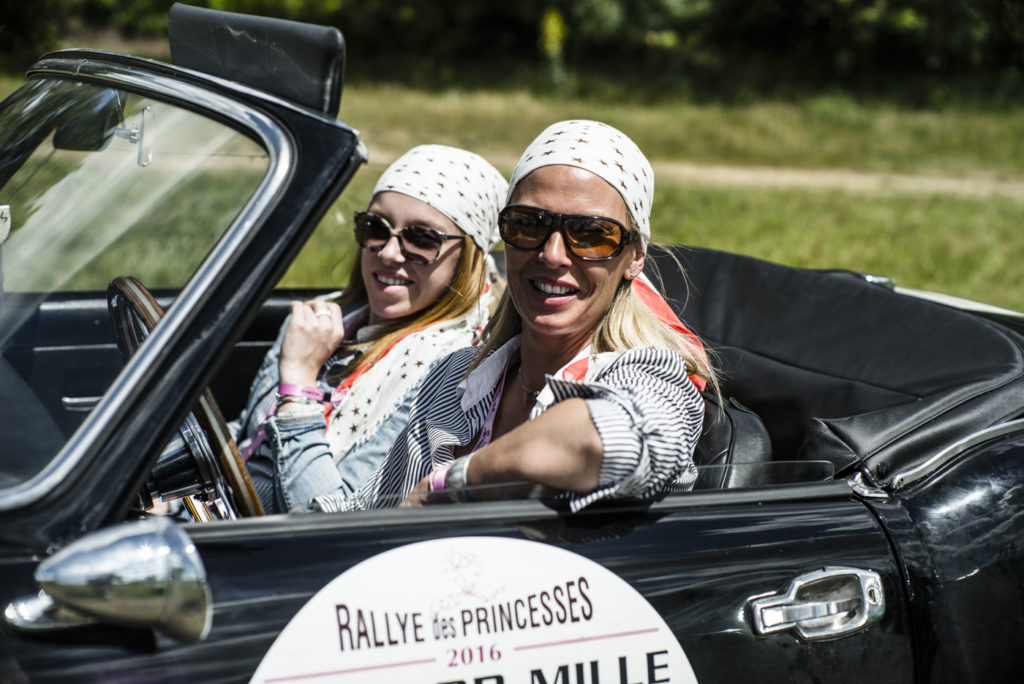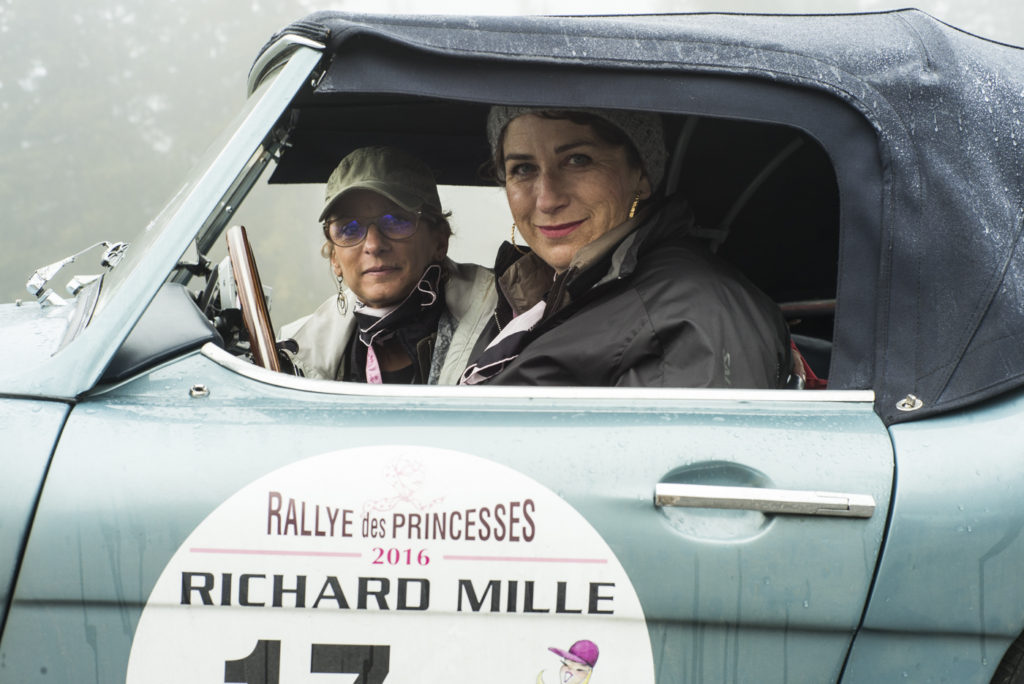After returning from the Rallye Des Princesses last week as photographer on the event for Richard Mille and Classic Driver, the Gordon Bennett rally begins this week and Le Mans 24hour race next. My mind returns to the plethora of trailblazers that I am researching, such as: Doreen Evans (had a brief three year career as a racing river), Ivy Cummings (at the age of eleven raced at Brooklands), Louise Aitkin Walker (first British woman to win the world title of the FIA World Rally Championship in 1990), and the list continues with Joan Richmond, Margaret Allen, Christabel Carlisle… These women personified a new type of liberated women: ‘scorchers’, as they were called, who lived for speed. I also thought of Carla Piacci (the mistress to Mussolini who had a huge influence over the design of their Alfa Romeo 6c, used in the ‘escape’ which inevitably went horribly wrong) and Bertha Benz, the first women documented to have driven a car solo, or the daughter of partner Gottlieb Daimler called ‘Mercedes’ whose name has continued to this very day.

However, listening to a daughter of friend of mine recently who looks to Amelia Earhart for inspiration, “If Amelia can do it, I can do it” she promptly says, knowing that Earhart had many failed attempts before her infamous flight, the women I am looking into this week, have an equal achievement in their respective fields of motoring and make me say, well if they can do it…
Camille du Ghast came a magnificent 33rd out of 122 drivers in the Paris to Berlin 1901 race, in her 20hp Panhard Levessor, her passion to motor racing came ‘supposedly’ from a love affair with Gordon Bennett owner of the New York Herald and of course the Gordon Bennett Trophy. During the 1903 Paris-Madrid, Ghast who, was amongst the leaders of the race, came across a catastrophic accident of an overturned De Dietrich, she got out and helped to clear the carnage, a year later entering the Gordon Bennett Cup (Berlin-Paris) she was excluded from the race on the grounds of ‘female excitability’. A true fighting spirit, Camille du Ghast certainly started the wheels turning for other women at the dawn of the century.

Elizabeth Junek who lived throughout the 20th century (1900 -1994) becoming one of those living legends that makes me realise that I need to speak to another living legend, Sir Stirling Moss, to quiz him about her. The Targa Florio was her thing, loving the wild Sicilian roads. Initially a mechanic for her banker husband, Junek soon provided a sublime driving style with her Bugatti 35b, (painted black and yellow), “her cornering being lurid though controlled to an inch as she came round and catapulted stones…” says Mr Davis in my first edition copy of ‘Atalanta’, She was nicknamed ‘Queen of the steering wheel’ and I can begin to understand why. Her racing career ended abruptly when her husband was in a fatal accident during the German Grand Prix. Devastated she sold all of her Bugatti cars.
Betty Haig’s competition career began in 1935. She worked with Singer on the car’s ‘suitability’ and with that they supported her to race in the 1937 Paris –St-Raphael road race of which she won and in 1951. She was the first British lady to race at Le Mans for the 24hour, a race many women (and men) try to enter to this very day. Betty had successes in various cars in different categories and kept the ladies record at the Prescott Hill Climb for six years. In a motoring world which was undoubtedly turning towards a masculine agenda, Betty moved her passions towards ensuring women were introduced into the sport. Towards the end of her life she helped to set up the Historic Sports Car Club.

After an era of suffragettes and empowerment of the woman, a former dancer at the Casino de Paris, Helle Nice, used her well-earned pennies and bought a modest Citroen. Helle Nice at her local motoring accessories garage met a Henri Courcelles a former World War One pilot and racing driver and through their ‘high’ social gatherings met a Philipe de Rothschild. These delectable fashionistas became the greatest of friends. Her frequent visits to Brooklands to watch them race inspired her to take to the wheel, where at the third all woman Grand Prix race at Montlhery competing against the chain smoking, muscular Tomboy, that of Violette Morris, Nice, took the podium. Over her racing career driving cars (Bugatti 35c, Alfa Romeo, and Duisenberg) often gifted from lovers, Ettore Bugatti announced that “the colour of her eyes are the perfect match for my Bugatti” providing her the name of ‘The Bugatti Queen’. Helle Nice raced in the United States and for over ten years her career went from strength to strength until the Brazilian Grand Prix in 1938 where she crashed in the Alfa Romeo leaving her in a coma. Following speculation that a previous lover who had joined the Nazi party had been at her bedside, her life dramatically changed and was outlawed from the racing community. She died alone and destitute in 1984.
However it is Mildred Bruce who is my favourite woman driver, caught for speeding on her brother’s motorbike at the age of fifteen later, raced the Monte Carlo Rally in 1927.
“Driving through thick fog for fifty miles around Carlisle, mist on the Yorkshire Moors, heavy snow falling from London onwards”. The drive through the Esterel Mountains, Bruce writes, “The only way I could stay awake was by driving fast over the passes.” Mrs Bruce came 1st in the Coup de Dames and 6th overall. Mildred, her husband Victor (who had won the rally the year before) and her passenger, the motoring editor of the Daily Sketch, Robert Bare, were tremendously happy as well as Mr Selwyn Edge the manufacturer of the AC, on hearing the results insisted they continued to carry out and official distance trial over about nine thousand miles in his AC to ‘prove’ the reliability. The same year she drove in the AC to the Arctic Circle and later along with Victor took on a 15,000 mile endurance record at the Montlhery track through ten days and ten nights of adverse weather, staying locally at Chateau Madame Patrice, Victor and Mildred would leave each other notes at the hotel as one slept and one drove, ‘fog clearing’ or ‘black ice’ so the other would be prepared for what lay ahead of them (race notes pre computer). Before I finish, I must quickly tell you that Mildred continued her trials with a 24 hour endurance at Montlhery in a 4 and a half litre Bentley, (which would later be driven in the Le Mans 24hour by the ‘Bentley Boys’). Oh and whilst walking down Burlington Gardens Mildred saw a fold up plane in a window, bought it and flew solo around the world. Later but before the war she joined the flying circus then after the war, she set up Air Despatch delivering initially mail and paper, then an air ambulance crew. I could go on about Mildred … There is a film in Mildred and Helle. Whoever would like to make it with me is most welcome.
I only hope that a new generation of girls can be inspired by their fighting standard of empowerment and influence. “If Mrs Mildred Bruce can do it, I can do it”. I am currently taking to the race track.